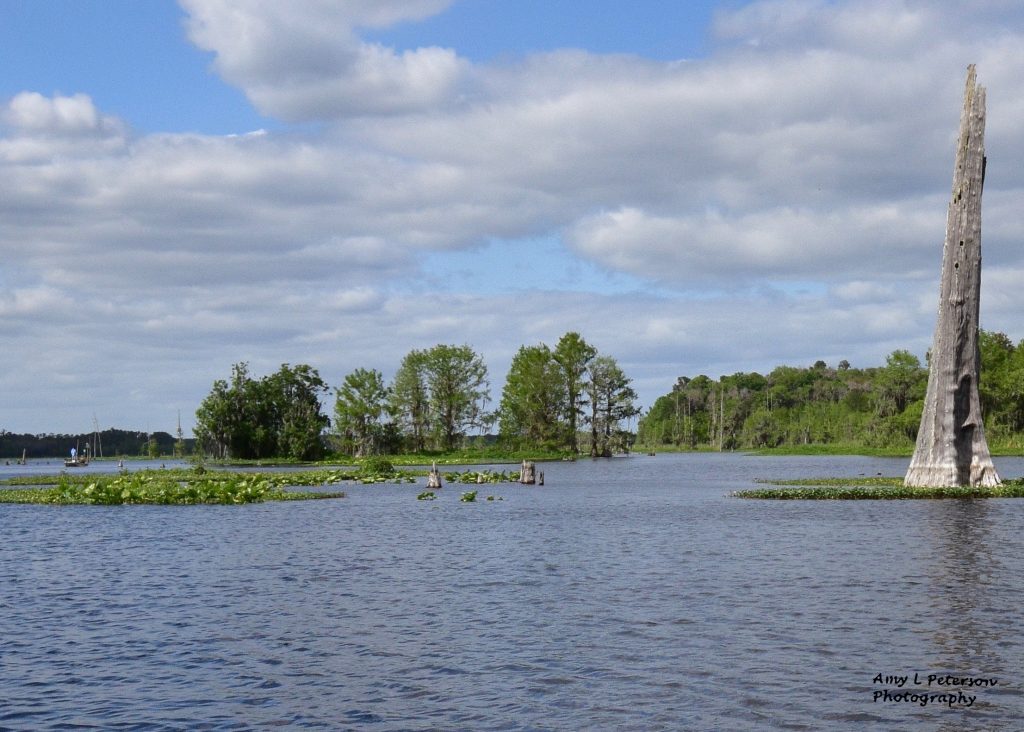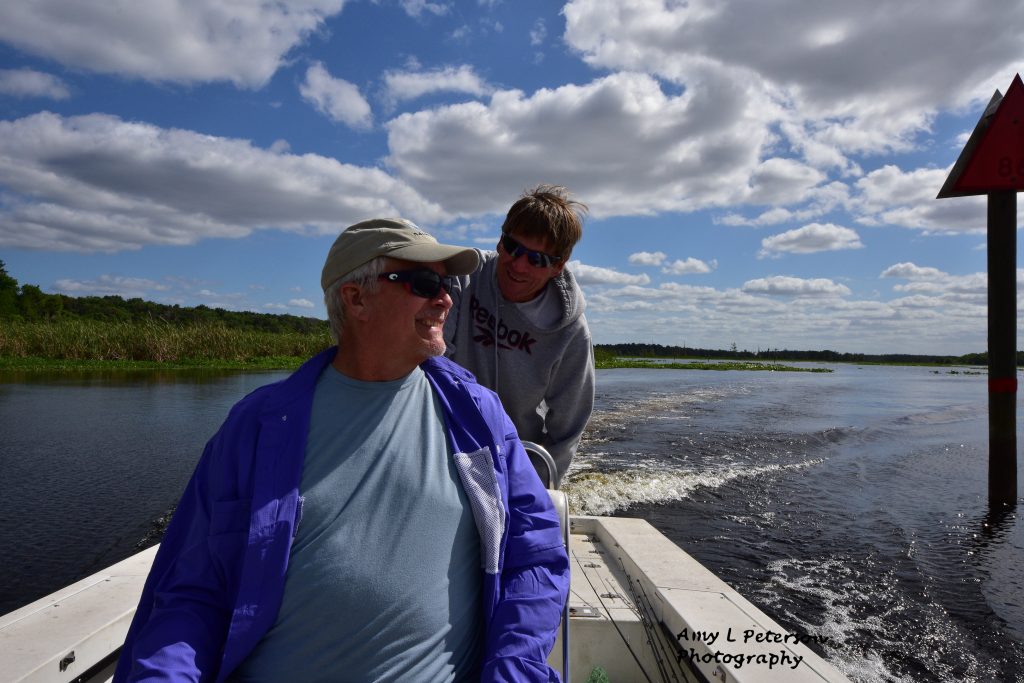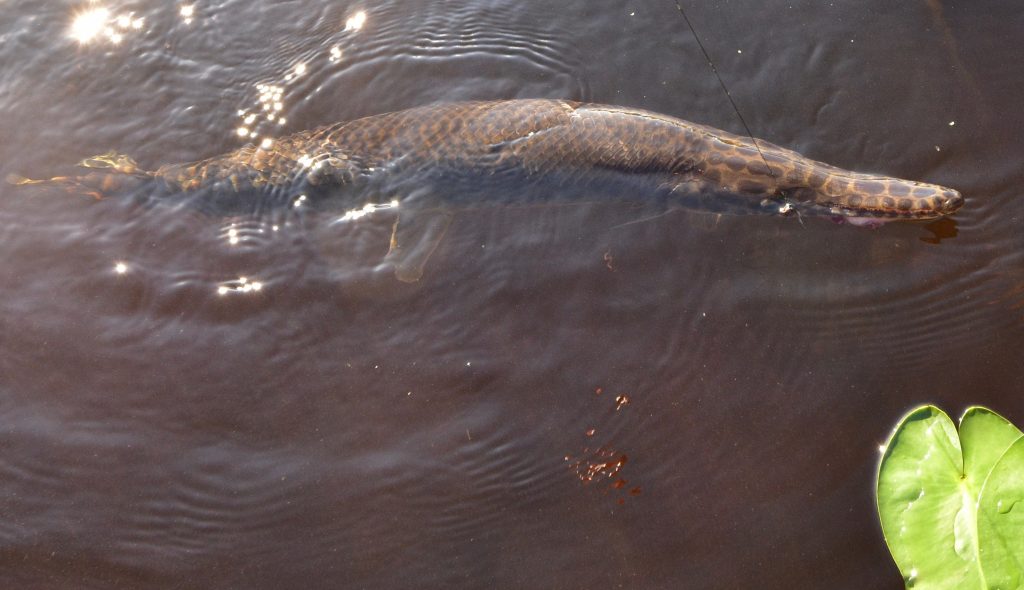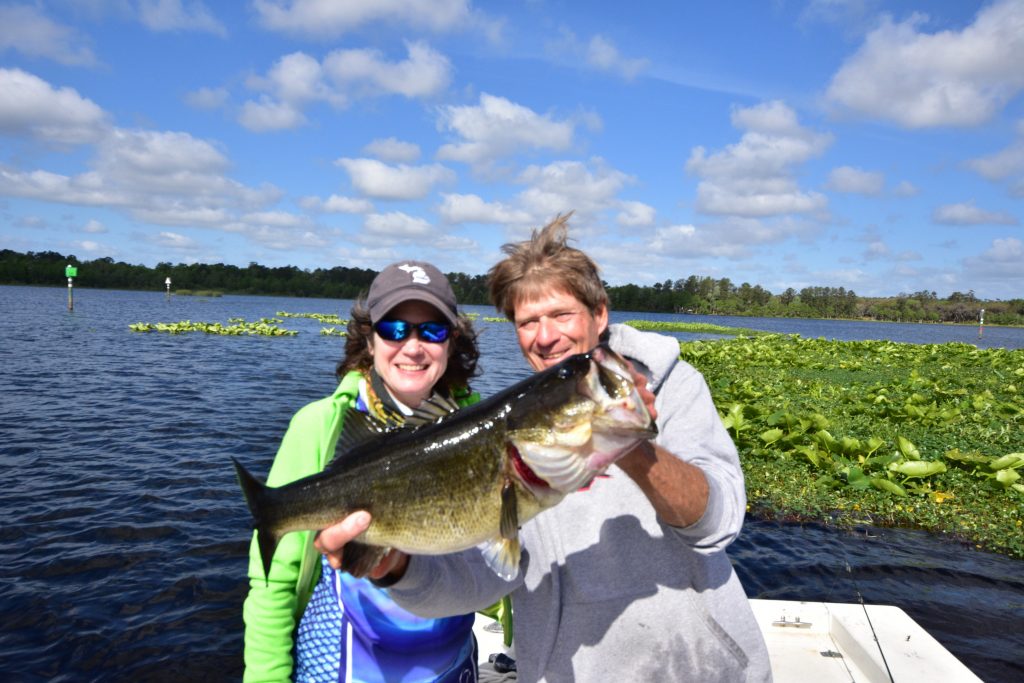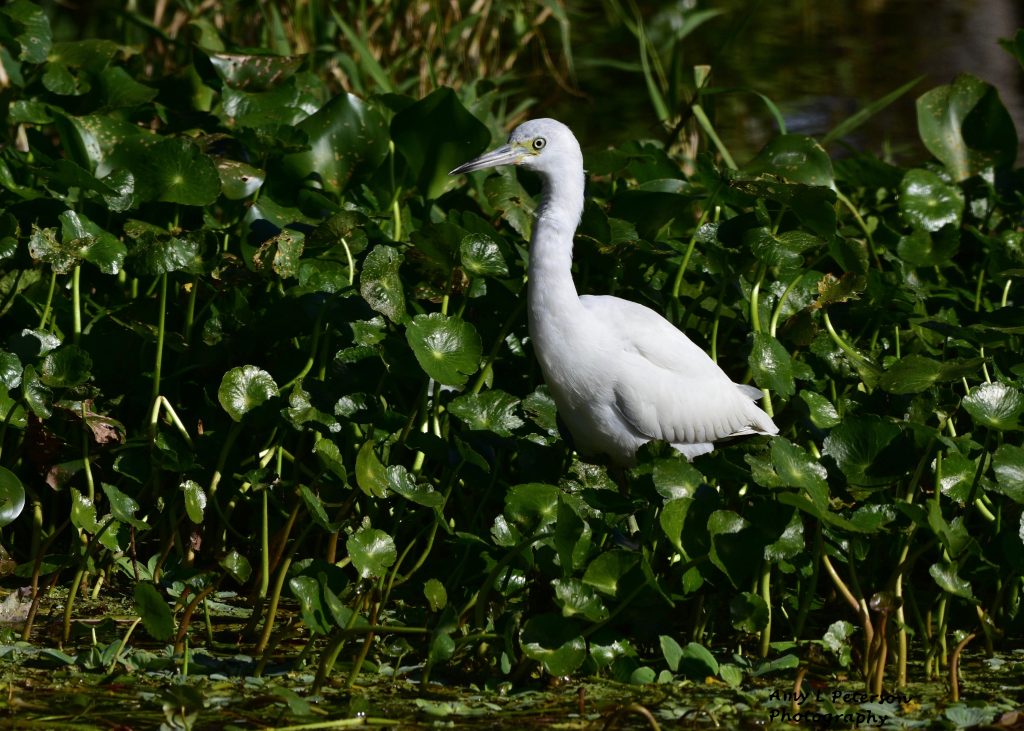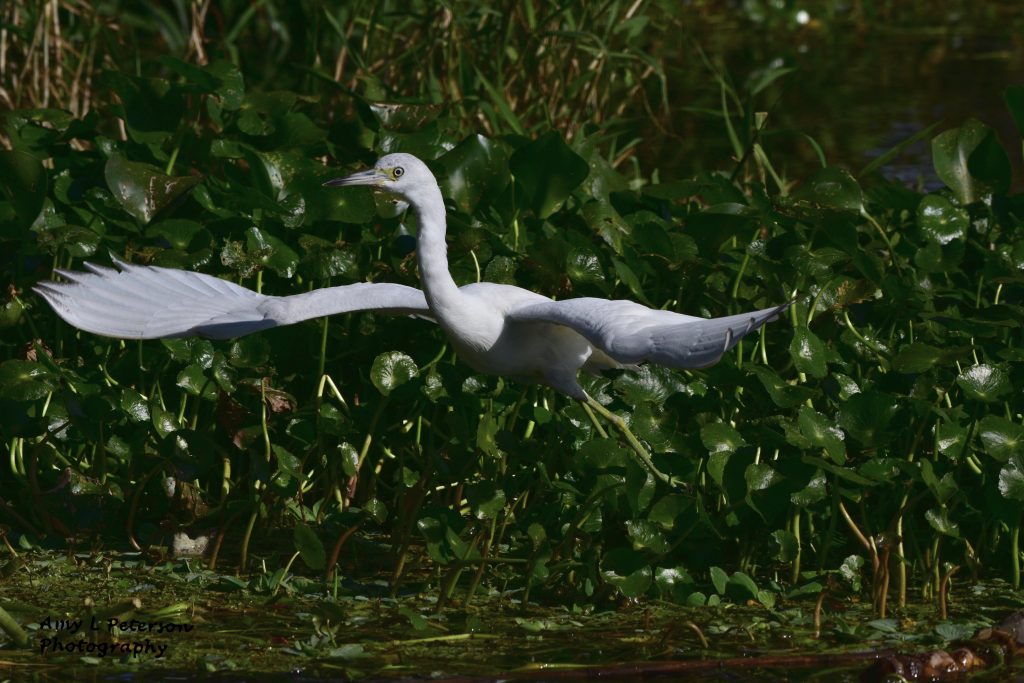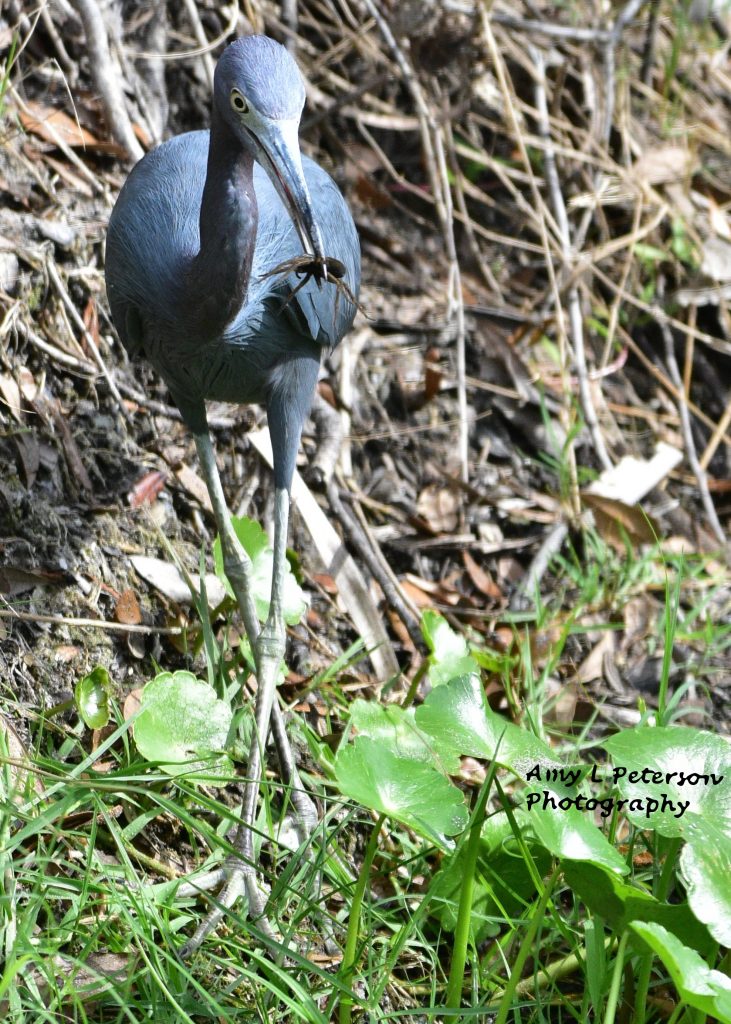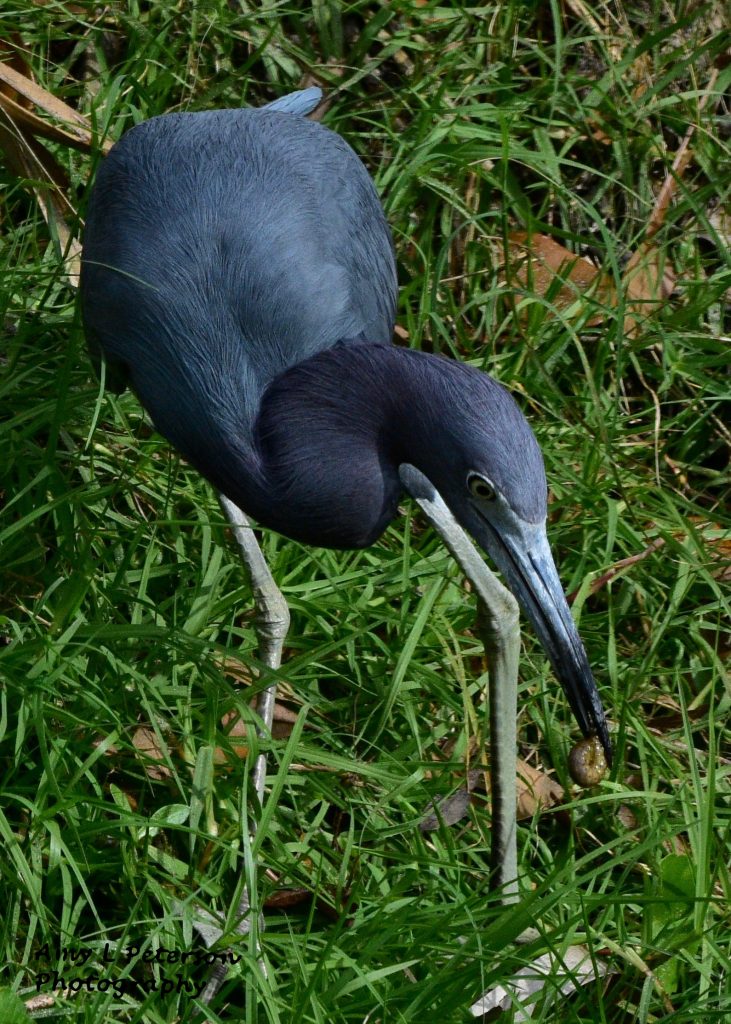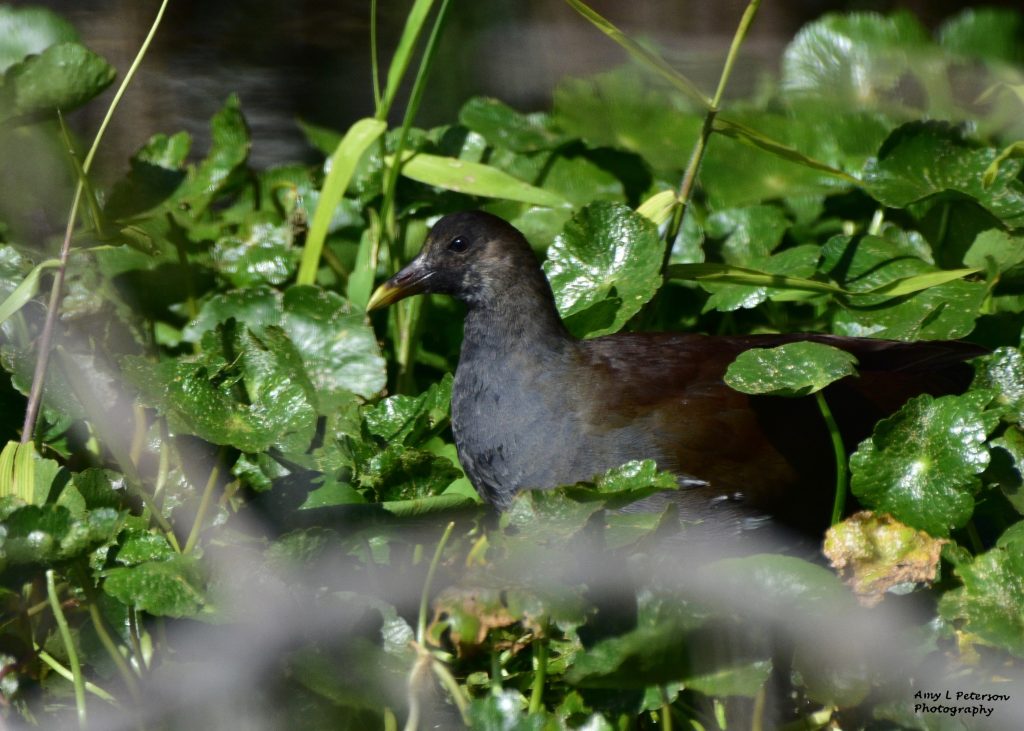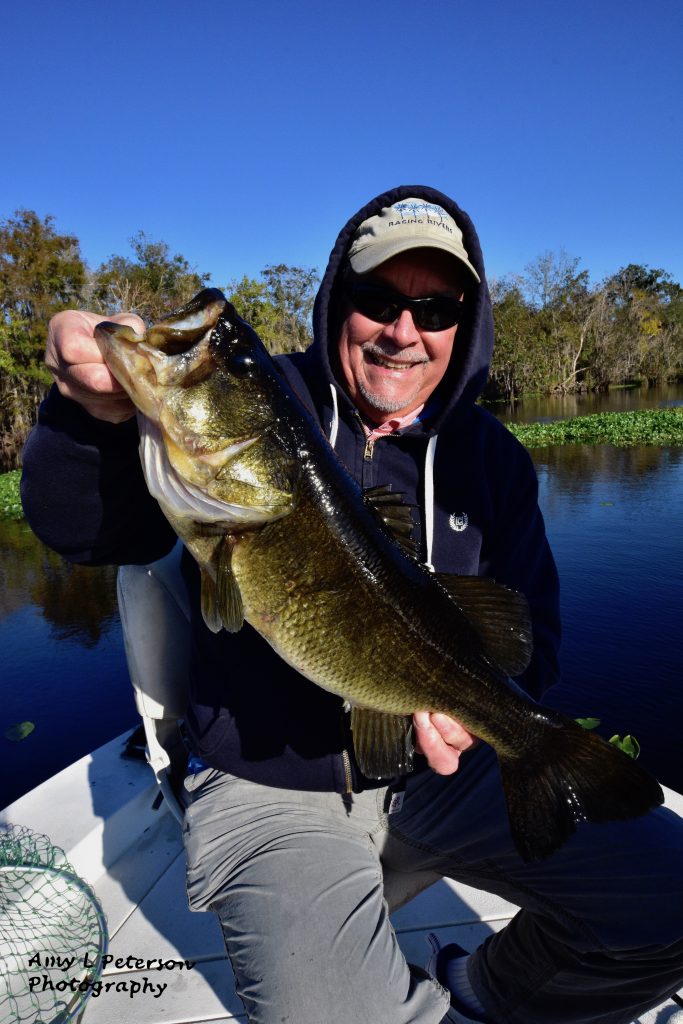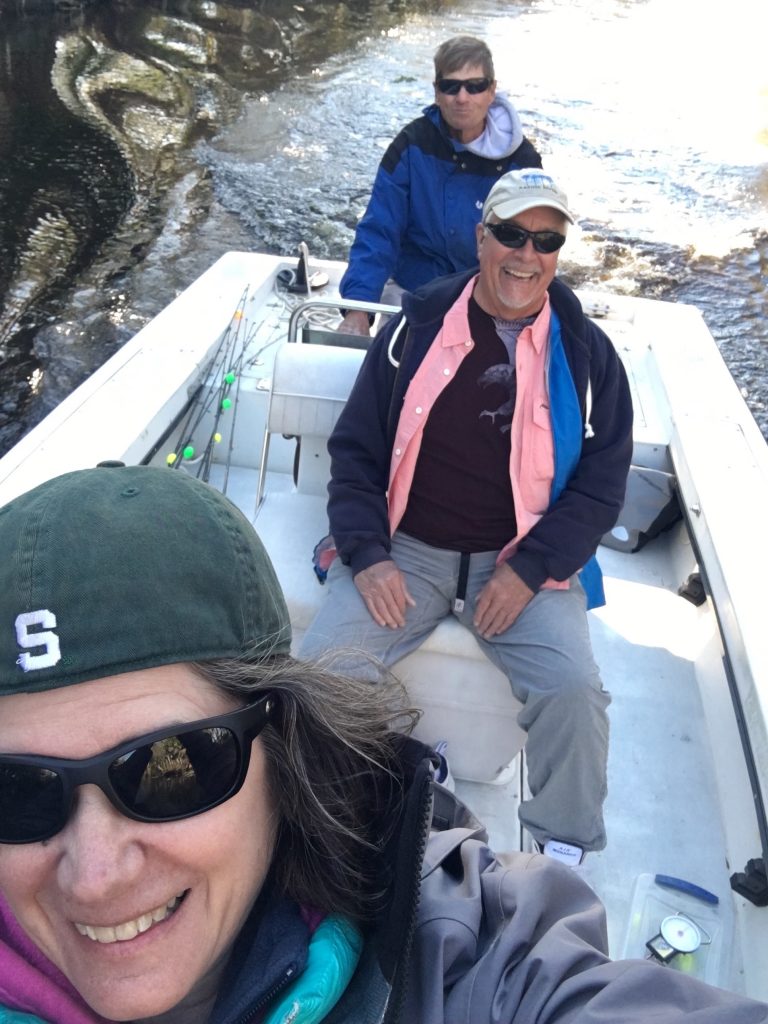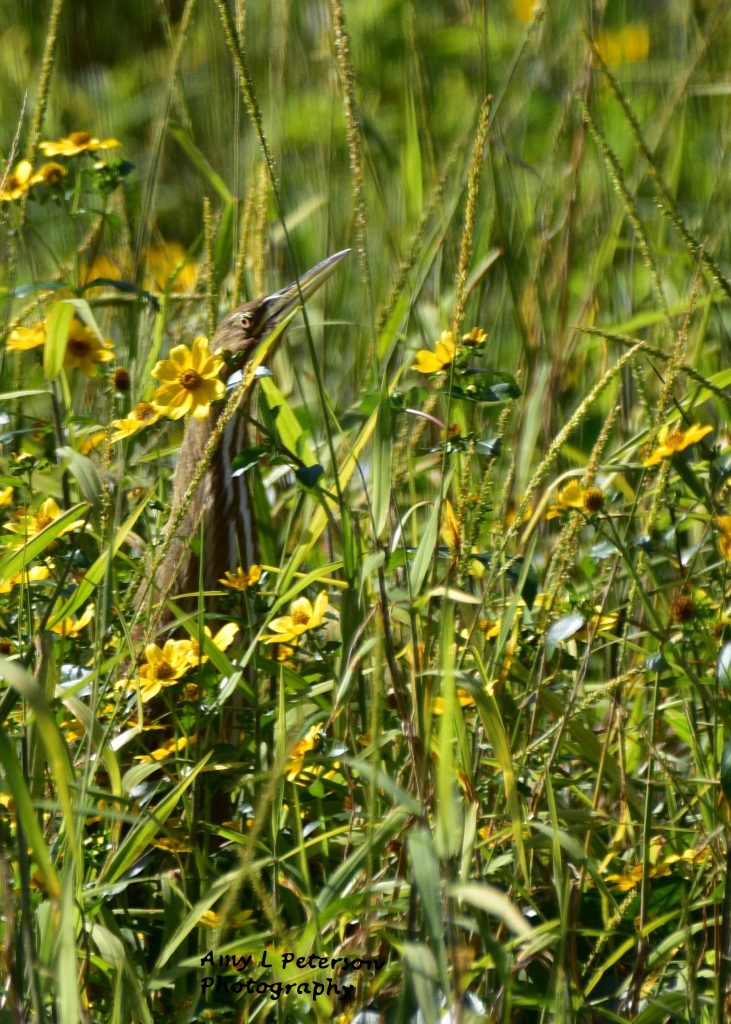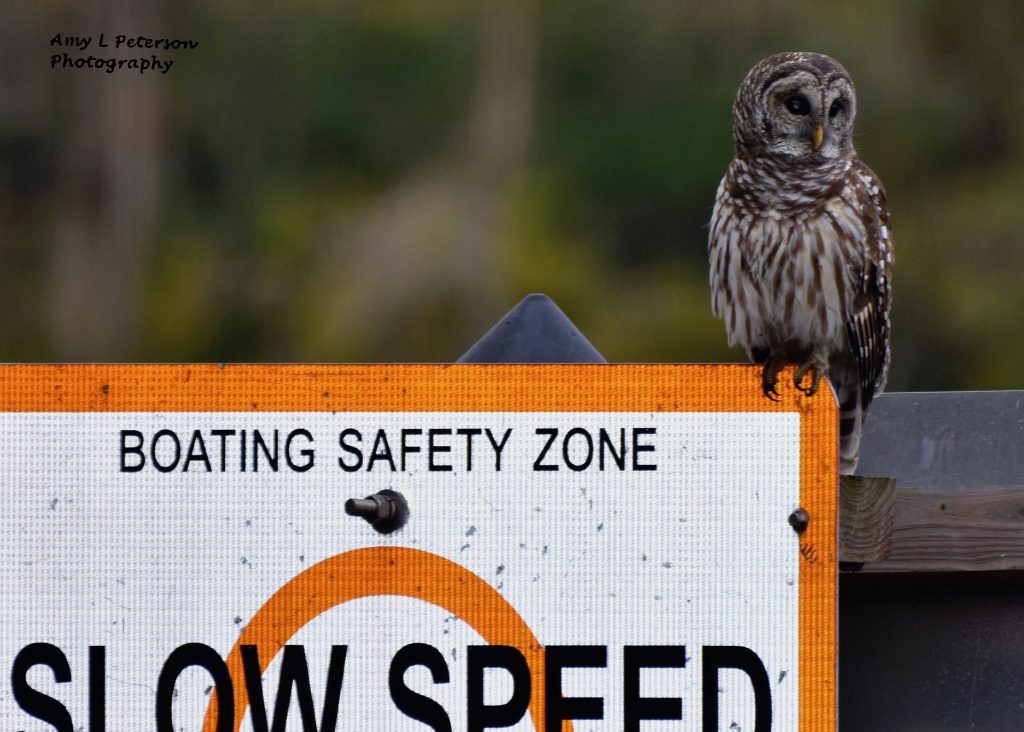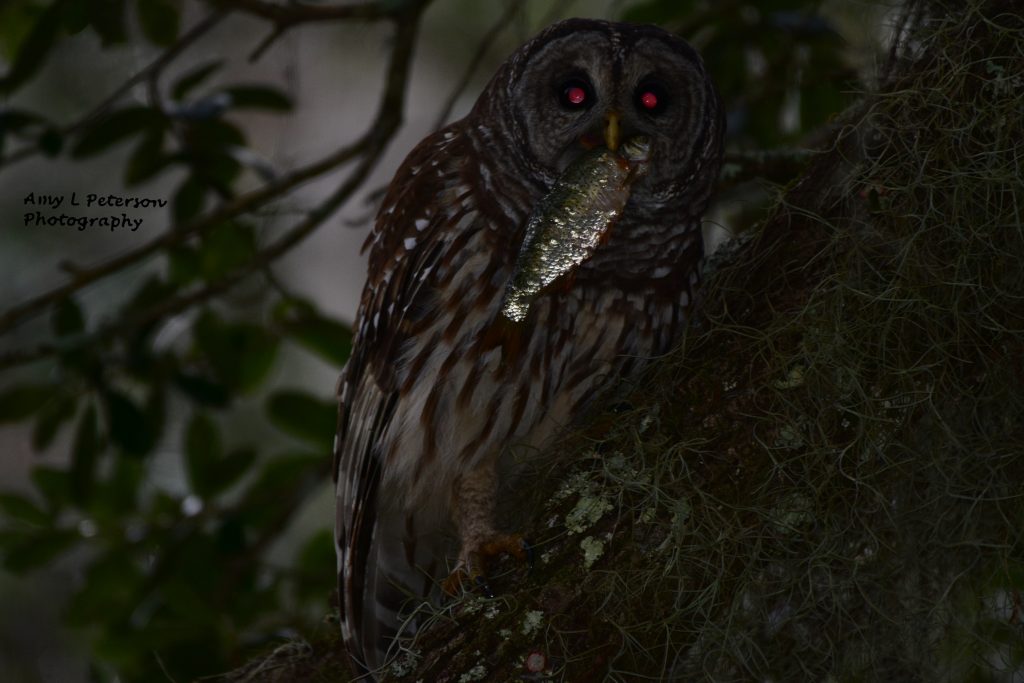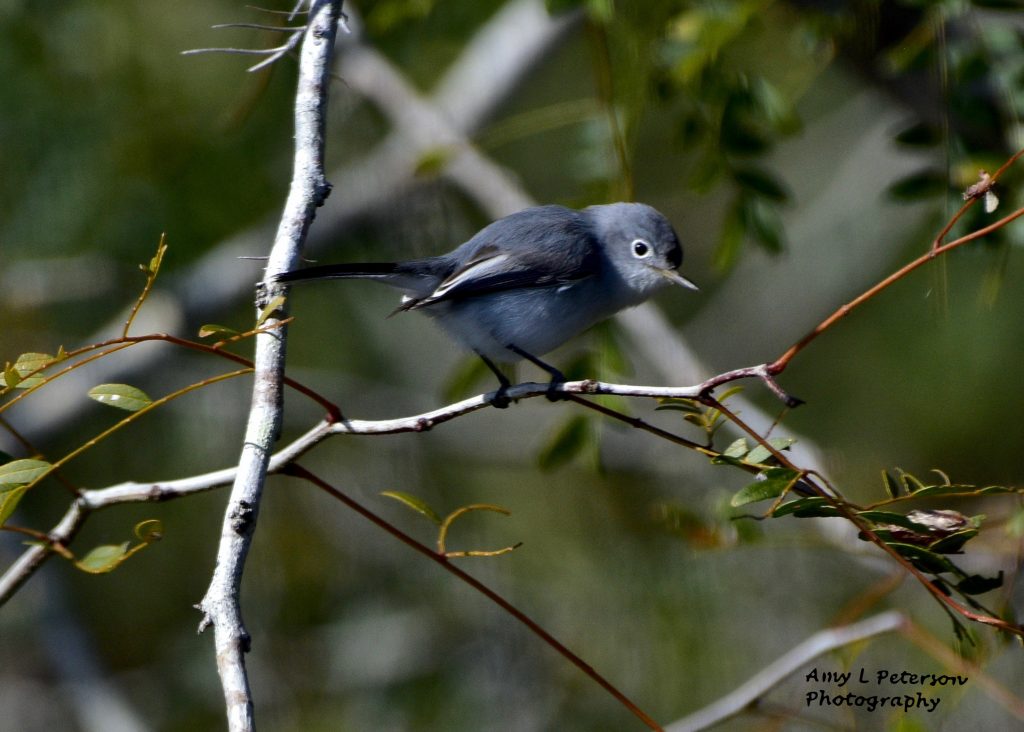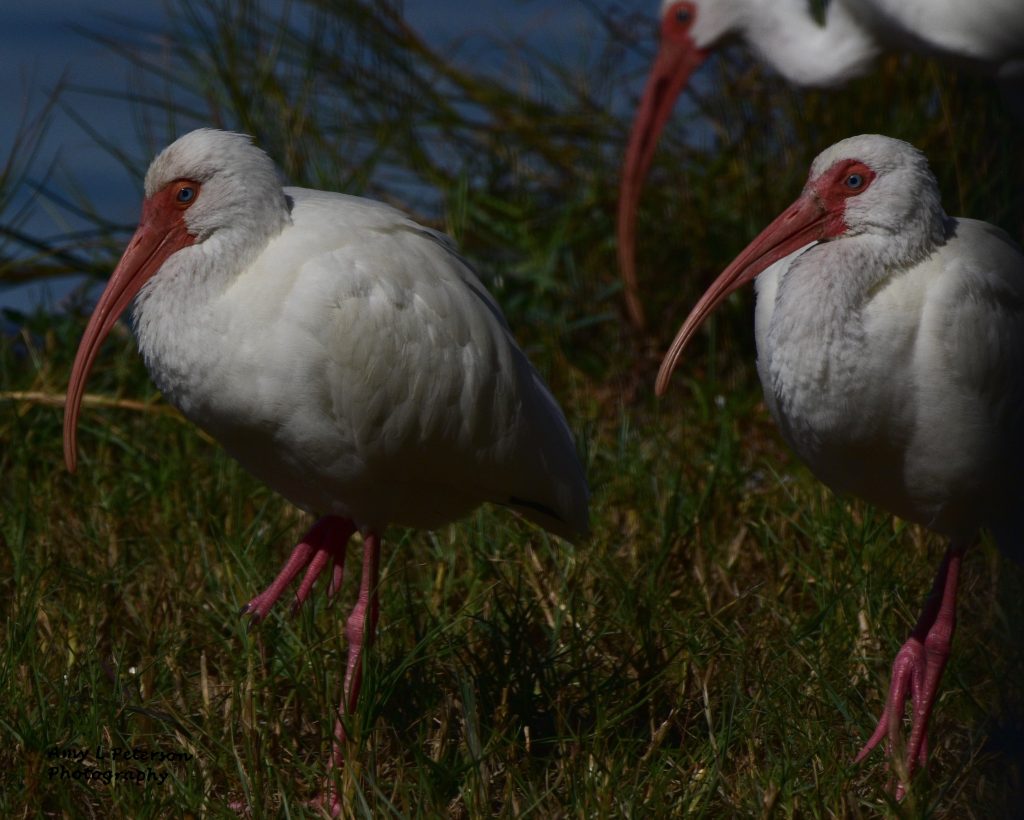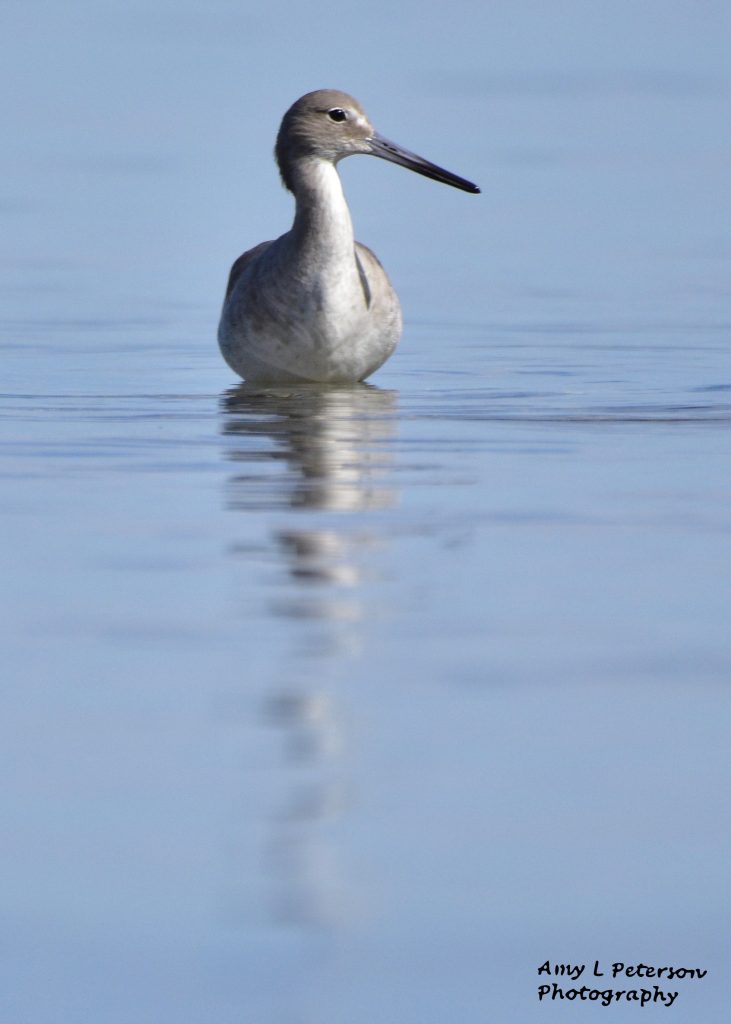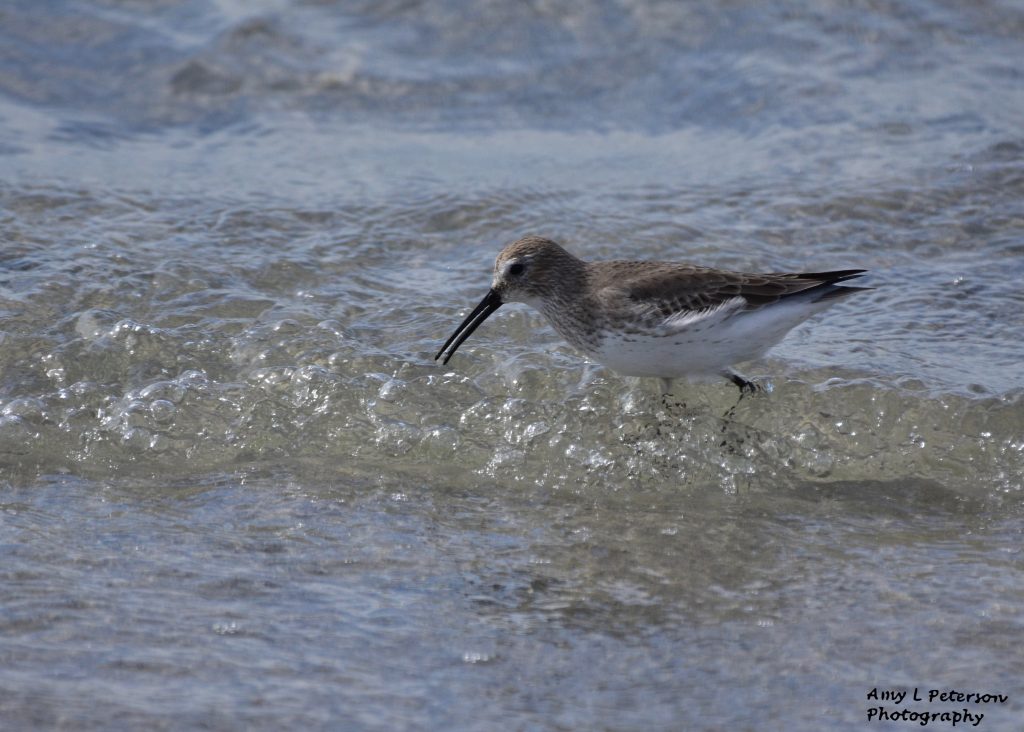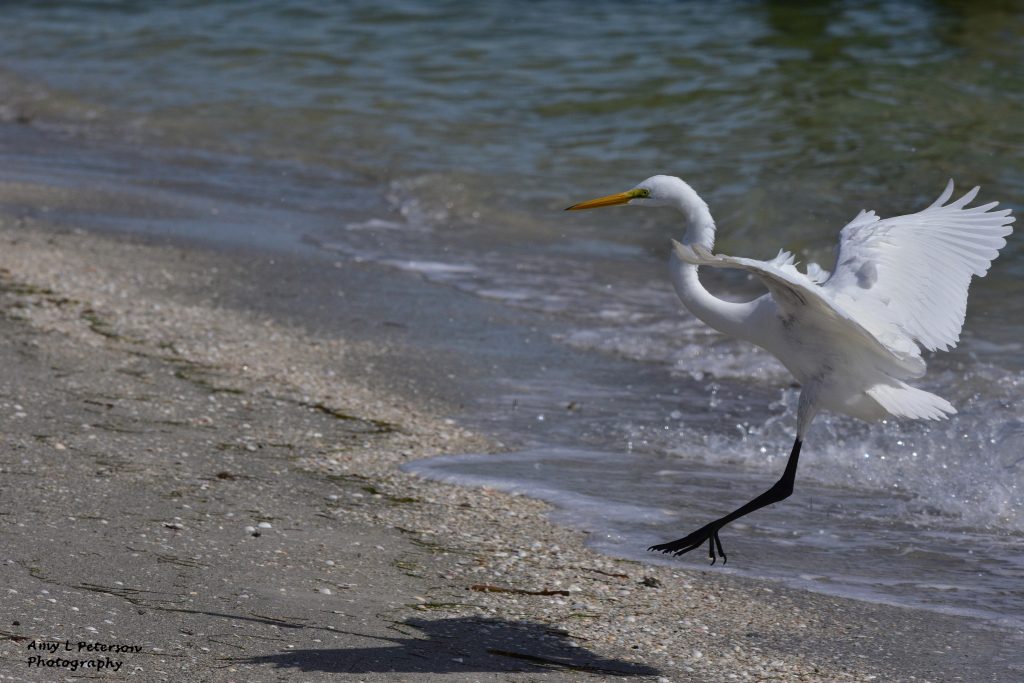It’s our third day on the St. John’s River in Florida, and at 42 degrees and windy, it’s darn chilly for mid-November. The sun is going down quickly and cold dampness is settling in. We’d had little success all morning, and famed fishing guide, Bob Stonewater, said we needed to move to a completely different part of the river, an hour drive away. By the time we resettled on this stretch of the St. John’s, it was three hours to sunset. Bob threw shiners against a seawall and we caught one small bass. We moved and tried fishing a giant expanse of water hyacinth clumps without a single bite. We’re at the last patch of weeds. and I’m not hopeful.
Bob has three lines in the water with live shiners hooked below bright colored bobbers. He says when the fishing is slow his clients will sometimes place bets on which bobber will get hit. I bet on the bobber closest to my husband, Mark. Bob bets on the one in the middle.
Moments later, Mark pulls a two-pounder from the weeds. Bob throws out another shiner and minutes later, Mark cranks in a slightly larger bass. A few minutes later, I pull in what I call “a guppy.”
Bob says, “I can’t control the size of what comes on the line.”
“Even after fishing for 50 years? “ I laugh. “Darn.”
Bob stands near me and says he’s still betting on the middle bobber. I give the nod to Mark again and ten minutes later, Mark pulls in a three pounder.
But Bob knows.
A half hour before the sun falls below the horizon, I see a sudden rippling of weeds five feet wide by five feet long. My bobber disappears violently and my line flies off the reel like a pike or a peacock bass. This is the fish Bob knew was there. This is my chance at a monster largemouth bass.
Mark and I had been blessed over the years to be able to fish for peacock bass in the Amazon, for marlin in Mexico, for giant lakers in Canada, for cutthroat trout in Wyoming and Montana, and for pike and bass in Michigan. Almost without exception, I catch my biggest fish on the last day, and usually within the last couple of hours of fishing. While Mark had gotten his marlin on the first day fishing in Mexico, mine came with two hours to go on the last day. And while Mark had gotten several large pike throughout our week in Nunavut, Canada, my largest pike came on the very last cast. It measured 52 inches.
In our home state of Michigan, Mark and I have an annual summer contest for the most Master Anglers. In 2018, I got Master Anglers for largemouth bass, smallmouth bass and rock bass…to Mark’s rock bass. Contests start anew when we go on a trip. We start planning our trips as soon as the rods are put away in November. We also watch fishing shows.
Mark had first seen Bob Stonewater on an episode of In Fisherman using live shiners to net some really big bass. As I mindlessly wrote Bob’s name down to look into in the future, Mark said he’d always wanted to catch a largemouth bass 10 pounds or more. We’d been married over 20 years and it was the first he’d mentioned it.
I kept Bob’s information and finally in March 2018 we met him at a convenience store in his hometown of Deland, Florida. He drove an older model SUV pulling a wide, long boat that looked well used but stable for fishing. His pleasant smile, strong handshake and disheveled hair made him immediately charming. He made sure we had lunch and drinks, and–my favorite part–said that Rodman Reservoir had some really big fish and that he’d done well there recently.
Rodman Reservoir covers 9,500 acres and consists of a large expanse of open water with areas of winding, open channel with pockets of weeds patches.
Bob stopped in front of a long, skinny line of water hyacinths that looked like just about any other patch of weeds to me. He dropped an anchor, set up a rod with a shiner, and threw it expertly against the weeds such that the shiner plopped into the water and the bright orange bobber came to rest against the weeds. He handed me the rod and said, “This is not reactive fishing. When you think you have a fish on, lift up your rod tip to feel for sure, and if a fish is on, reel down, lock it in and set the hook.”
Seemed simple enough, I remember thinking. I nodded confidently.
Bob rigged up a minnow on a rod with an orange bobber and handed it to Mark.
At first I wasn’t sure I liked shiner fishing, because all you do is watch the bobber and try to make the shiner go where you want it. Sometimes the shiner moved into the weeds, sometimes it didn’t. While we waited, Bob made suggestions, such as, “Amy, pull your rod back so the shiner isn’t stuck in the weeds. Mark, reel yours back towards you because we want the shiner in the weeds, not the open water. Amy, let’s re-cast yours, because most fish don’t hit in open water.”
Suddenly, my bobber disappeared. I reeled down, felt a little resistance, set the hook…and watched in slow motion as my minnow and bobber flew over my head and landed in the water behind me.
Bob looked at me like a disapproving parent and said, “That was just the minnow going under the water to get away from a fish.” As I reeled in my wounded minnow he said, “You have to lift up your rod tip first to feel whether it’s the minnow or a bass.”
I mumbled “Okay,” and felt a pout forming around my mouth.
Bob inspected my minnow and said, “See, nothing touched it.” He threw it back towards the weeds, and, just as he handed me the rod, I heard a loud grunt. I turned in time to see Mark’s minnow and bobber go flying over his head and land on the water behind him.
“That was all minnow, Mark.” Bob repeated his instructions, a little more sternly.
Within minutes, my bobber disappeared again, only this time it was tugged towards open water. “That’s all minnow,” Bob said. “A fish is after it, but it hasn’t hit it yet.” A half second later, he said, “Now he’s got it! Reel down, lock it in and set the hook!”
I think I did what he said, but this time, I set the hook…and only a hook and the bobber went flying into the air. My minnow was gone.
“That was a trash fish,” Bob said. He took the rod from me and added, “You have to reallllly set the hook. You have to use your entire body.” He demonstrated with an almost violent twitch of his arms and back, and handed the rod back to me.
I landed my next fish, which was a trash fish. Trash fish can be either gar or dogfish/bowfin, both of which fight pretty hard after eating one’s live bait.
After Bob released the undesirable fish, Mark sent another minnow through the air. This time, after Mark reeled his minnow back into the boat Bob showed him the bite marks on it and said, “That minnow couldn’t have been any further down the basses’ mouth!”
Indeed, Mark and I were not the best students of fishing live minnows. And yet we were fishing in one of the best largemouth bass fisheries in Florida and the bass were biting. We had the best bass guide in Florida and we felt like snails because he wanted us to catch a giant bass as much as we did. More minnows flew threw the air, only for Bob to release the dying ones into the water. To add to our embarrassment, an osprey adult with a fledgling in a nearby nest noted the two boneheads from Michigan and swooped in for a dying minnow Bob had thrown in the water.
The final insult was Bob’s comment to Mark after he blundered one more time: “The only thing that fish needed was a fisherman on the other end of the line.”
Mark and I got laser focused after that and started pulling in bass. They weighed between five and seven pounds. The first day ended with Mark pulling in what was nearly an eight pounder.
Mine was closer to nine pounds.
The next day we fished Dias Lake, which is closer to Bob’s hometown and where fisheries biologists had recently electroshocked a monster bass. The fishing was slow, giving us time to learn more about Bob and his family, his love for the food his wife cooks, that he shoots billiards with a group of guys at least one day a week, and that he’s six days older than Mark. Bob also told us about the day he fell into the water while a gator was swimming by with a deer in its jaw.
We caught a few fish at Dias Lake and Mark’s was the biggest. That bothered me all night.
For our third and final day we returned to Rodman Reservoir. The fishing was slow compared to the first day, but we still managed to pull in a couple of large fish.
The biggest bass came with a couple of hours left to fish. My bobber disappeared and Bob confirmed it was a bass. My line peeled out toward open water and Bob said I had a big one, to reel down and set the hook with everything I had. I set the hook, and after a brief fight, reeled in my biggest bass: 9.5 pounds. It was the biggest of the trip.
The good thing was I’d beaten Mark again. The problem was: Mark hadn’t caught a ten pound bass.
When we returned to Florida in November 2018 to take another go at a big bass, Bob greeted us by saying it was “one of the coldest mornings we’ve had in seven months. But we’ll see what we can do.”
It took five minutes to motor from the boat launch and the main channel of the St. John’s River to a side channel where the wind was blocked by vegetation. The first thing I noticed was the birds. Along the first bank, positioned to face the sun, were herons, egrets, and a limpkin. I took aim with my camera as we cruised slowly by, and only one of the birds flew off.
Bob dropped anchor in front of a large weeded, took a rod in hand, rigged up a minnow, flung it with ease down the shoreline and handed the rod to me. “Remember,” he said, “if you feel something on the end of the line, reel down, tighten up and set the hook.”
I patted him on the back and said, “We aim to do better than last time.”
We pulled a few small fish out of the first weed bed and were entertained between strikes by gallinules walking amongst the weeds in search of food.
Throughout the day, Bob took us to several places: large weed beds, small weed beds, little islands, large islands, a section of the Hontoon River, and banks with thin lines of weeds that looked unlikely to hold fish but did.
We moved several times and birds cackled and called everywhere we went.
Some birds, like this limpkin, flew toward us and landed within 10 feet of the boat, as if interested in what we were doing.
We also had a manatee appear next to our boat and spend a few minutes with us before moving on.
At one small weed mat near a large, linear weed bed, my bobber disappeared, I set the hook with gusto, Bob grabbed the net, knowing it was a big fish…and the fish rubbed me off in the weeds. No more than 10 minutes later, Mark had the same experience at the same weed mat and was rubbed off in the weeds. We came back to that weed mat several more times but never brought in a big fish.
On the third and last day fishing with Bob in November 2018, we started fishing in the same area we’d fished the first two days. A barred owl met us at the boat launch because it knew Bob sometimes threw out dead or dying minnows.
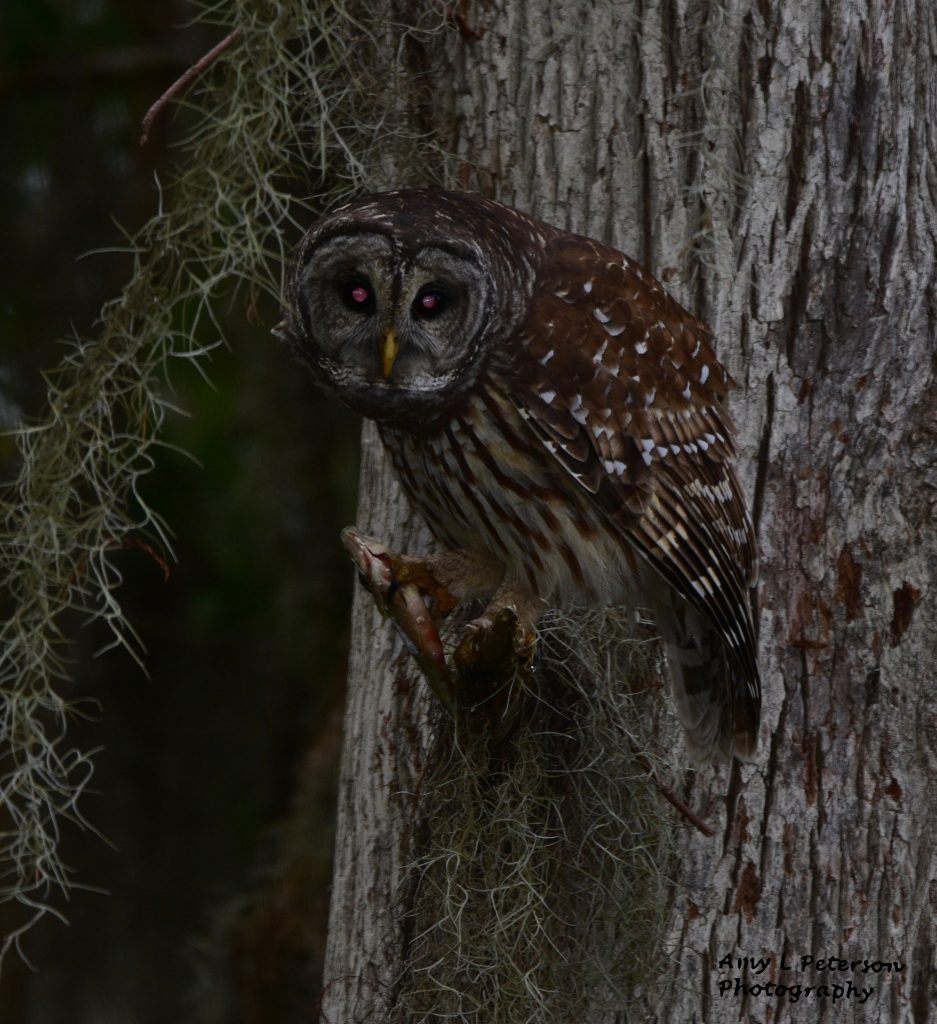
We fished for several hours without much to show for our efforts. Along the way we saw several more birds.
We looked toward the shore when we heard a loud rustling noise and saw this raccoon watching us.
While the birding and wildlife were awesome, we caught only a hand full of small bass all morning. So at about 1:30 Bob asked if we were up for drive, if we’d follow him in the car for an hour to go somewhere else. I asked myself: Why drive an hour when we’d only have three hours left to fish? The answer was: Because Bob knew.
The monster bass had ripped my line into open water, well away from the boat. I lowered my rod and set the hook with every fiber in my body. My rod bent in half and the bass took out line like the pike I’d had on my line in Canada. I hung on. Out of the corner of my eye I saw Bob grab the net. The fish reached the mid-point of the river, stopped, turned and headed right back to the boat. I reeled and reeled, and reeled, and positioned myself so I could move my rod under the bow of the boat, and reeled…and reeled in bobber and hook.
Bob looked at me, said the first swear word I’d heard out of his mouth and apologized the second he’d said it. He said there was nothing else I could have done, that big, old fish just sometime do that.
I didn’t know then that I would think of nothing but that fish for the next several days.
And so, apparently, did Bob. Two days later, he texted me, asking me to send some photos of this trip and our first trip with him. He ended with, “I wonder how big it was.”
That, from a guy who’s fished for 50 years.
See, part of what makes Bob a legend as a bass fishing guide is his youthful enthusiasm and his passion for hooking up people like me and Mark with big fish. But what’s truly legendary is that he knows–not only where to find big fish but also when to move and when to wait. That is why Mark and I have had several chances to catch a giant bass. And that’s also why when Mark and I go back to Florida for another chance at a 10-pounder, we’ll be fishing with Bob.
In fact, we’ll be seeing Bob in March 2019.
Epilogue:
After our third day of fishing, we drove to St. Augustine for a little birding before having dinner with Mark’s old college roommate.
My favorite was a brown pelican that swam about 50 feet from a elevated boardwalk on the water and came right up to us on the beach.

